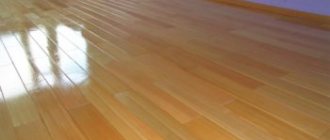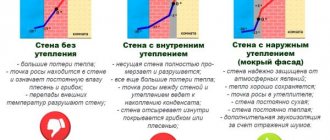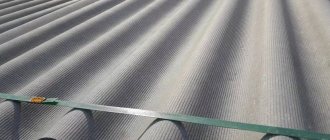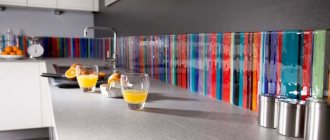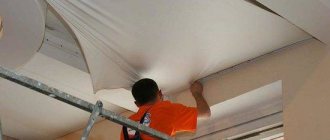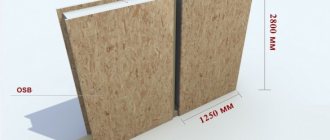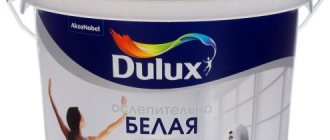Foam glass is a durable, strong and popular material for insulation. It is easy to install and highly efficient. The technology was invented almost a century ago in the USSR, and practical application was invented later in Canada. Foam glass appeared on the building materials market recently, when its production technology made it possible to make it affordable and of high quality. Before use, it is worth considering what granules or foam glass slabs are, their main advantages and disadvantages, as well as methods of use for insulation.
Description and types of foam glass
Foam glass combines the advantages of two materials at once. It combines silicate glass, which is durable and brittle, and foam, an incredibly light material. The production of foam glass involves heating a silicate mass with the addition of a substance that forms a gas. High temperature leads to the melting of the substance, as well as the formation of small bubbles. This technology allows us to obtain a lightweight and durable material that has a high heat resistance.
In the field of thermal insulation, two main types are used:
- Slab foam glass. The insulation is in the form of a plate, which has a structure with closed cells. Ideal for insulating basements, facades, ceilings, floors and foundations. The thickness is 6-12 cm, and the size of the plate is 45*60 cm. They can withstand even significant operating loads, do not shrink and are resistant to deformation under mechanical stress.
Slab insulation
- Granular material. It is a microporous spherical granule. It is produced in granules of various sizes from 1-5 mm to 7-20 mm. Can be used as insulation for interior walls, ceilings and floors.
Granular foam glass
The technical characteristics of the two types of material are similar, so when choosing it you should base only on the convenience and feasibility of using insulation of one form or another.
MONOLITHIC PLATE FOUNDATION (USF) extruded polystyrene foam (EPS) and foam glass crushed stone
Classic slab foundation using EPS
Construction of a slab foundation using foam glass crushed stone
| № | Name of works | UNITS change | Without foam glass | With fractionated foam glass 40 cm (28 compacted) | With fractionated foam glass 32 cm (25 compacted) | ||||||
| quantity | price | sum | quantity | price | sum | quantity | price | sum | |||
| 1 | Excavation work (without soil removal) | m3 | 79 | 500 | 39 500 | 45 | 500 | 22 500 | 45 | 500 | 22 500 |
| 2 | Geotextile grade 300 | m2 | 280 | 60 | 16 800 | 280 | 60 | 16 800 | 280 | 60 | 16 800 |
| 3 | Sandy base, with work | m3 | 27 | 800 | 21600 | ||||||
| 4 | Crushed stone base and drainage, with work | m3 | 45 | 2 050 | 92 250 | ||||||
| 5 | Waterproofing: PVC film 200 microns, with work | m2 | 280 | 45 | 12 600 | ||||||
| 6 | Waterproofing: profiled membrane, with work | m2 | 280 | 115 | 32 200 | 280 | 115 | 32 200 | |||
| 7 | EPPS 80 mm in 2 layers of sub-slabs and 1 layer for the blind area | m3 | 29 | 4800 | 139200 | ||||||
| 8 | Work on EPPS | m3 | 29 | 450 | 13 050 | ||||||
| 9 | Fractionated foam glass, with a blind area of 200 mm | m3 | 71 | 3000 | 213 000 | 59 | 3000 | 177 000 | |||
| 10 | Work on fractionated foam glass | m3 | 71 | 350 | 24 850 | 59 | 350 | 20 650 | |||
| 11 | Construction of a reinforced monolithic slab 12x12x0.25 m | m3 | 36 | 8 500 | 306 000 | 36 | 8 500 | 306 000 | 36 | 8 500 | 306 000 |
| TOTAL, rub.: | 641 000 | 615 350 | 575150 | ||||||||
| SAVINGS, rub.: | 25 650 | 65 850 | |||||||||
| Saving, % | 4,10 % | 10,30 % | |||||||||
Main characteristics
According to statistics, the higher the hardness of a material, the lower its thermal insulation properties. Foam glass is one of the insulation materials that not only withstand heavy loads, but also have a low thermal conductivity.
Other material characteristics include:
- Thermal conductivity. Foam glass has a thermal conductivity of 0.04 W/m*s. If we compare it with wood, then for this material this indicator is two times lower, and for minimal wool it is higher on average by 25%. Therefore, foam glass perfectly protects against heat loss better than wood, mineral wool and many other insulation materials. High thermal insulation properties are explained by the presence of small closed cells with thin partitions in the structure.
- Strength. A square meter of insulation can withstand pressure of 40-100 tons, and the strength indicator is 0.5-1.2 MPa. This indicator does not deteriorate over time. However, the impact strength of the material is low. Foam glass can be broken under strong mechanical stress.
- Soundproofing. Foam glass can be used effectively not only for protection against heat loss, but also against extraneous noise. The material is capable of dampening sound waves with a force of 45-56 decibels.
- Temperature resistance. The insulation is able to withstand temperatures from -200 to +300 degrees, which allows it to be used even at extreme temperatures.
- Density. This indicator for the material is very low and is equal to 100-250 kg per cubic meter. And this figure is at least three times lower than the density of wood.
- Vapor permeability. Foam glass can also be used as a vapor barrier. The vapor permeability indicator is only 0.005 mg/(m*h*Pa).
- Moisture resistance. Foam glass slabs and granules can absorb no more than 2% of water from their own volume. The material not only does not absorb moisture, but also does not change its properties when interacting with it.
High moisture resistance
- Biological stability. Foam glass has a high resistance to insects, rodents and microorganisms. The insulation does not absorb water, so mold and mildew do not form in it. And the high hardness of the material protects it from insects and rodents.
- Chemical resistance. Foam glass is a chemically inert material. Therefore, when in contact with acids, alkalis, gases and oil products, foam glass does not interact. The only substance with which foam glass interacts is hydrofluoric acid.
- Ecological cleanliness. Foam glass does not burn, does not emit toxic gases and does not produce decay products. This makes the material safe for insulating residential premises.
The unique characteristics of the material are explained by the combination of the properties of silicate glass and gas microcapsules.
Peculiarities
When two different substances are combined in one material, it can give a very interesting effect. This is exactly what happened with foam glass - here the classic silicate glass, which in past years was in most windows, and foam, consisting of small bubbles connected by thin layers of liquid, were combined into one whole.
The material is obtained by heating a silicate substance into which a gas-forming substance is introduced. Under the influence of elevated temperatures, it begins to melt, at the same time the gas-forming agent decomposes, releasing small bubbles, they are “caught” by the hot melt and firmly fixed in it.
Foam glass has unique consumer properties:
- light weight:
- strength;
- waterproof;
- flammability and heat resistance;
- inertness towards chemical reactions.
Foam glass gets some of its characteristics from silicate raw materials, and some from gas. For example, the material loses the transparency of glass, but acquires high noise-absorbing and heat-insulating properties.
Separately, we should dwell on the physical and technical indicators of the composition.
Foam glass has a fairly low density, which is 100-250 kg/m3. For comparison, the density of wood varies from 550 to 700 kg/m3. By the way, this is why foam glass has been repeatedly tried to be used as a floating building material.
The volumetric weight is approximately 70-170 kg/m3, and the sound insulation of a 10 cm thick block is 52 dB.
The material is resistant to combustion: fire resistance class A1 (non-flammable compounds). It does not decompose under the influence of adverse atmospheric factors, and also does not emit harmful and toxic substances.
The compressive strength of foam glass is quite high - the material can easily withstand pressure of up to 100 tons per 1 m2, other characteristics also inspire optimism for craftsmen who intend to use foam glass for construction work.
Thermal conductivity at standard temperature is 0.04 W/mC, which is higher than that of wood (its value is only 0.09 W/mC), but the ability to absorb sound waves is comparable only to mineral wool and is 45-56 dB.
The water absorption coefficient does not exceed 2%. This means that foam glass practically does not absorb moisture, and vapor permeability is almost zero - 0.005 mg/ (m.h. Pa). This material can be called an ideal vapor barrier.
The blocks can withstand elevated temperatures, maintaining their properties even at 300 C, and if special additives are present in the composition, then the heat resistance threshold can reach 1 thousand C. Moreover, the material is not afraid of low temperatures and easily tolerates contact with liquid nitrogen (-200 C) without any signs of destruction.
Chemical inertness is a rather valuable quality along with high environmental friendliness. There are probably not many modern insulation materials that would be equally harmless.
Another plus is durability. For comparison, polymers quickly age, losing their performance characteristics, and begin to release toxic substances into the environment. Foam glass does not have such disadvantages - its use is more justified than the use of PVC plastics or expanded polystyrene. The service life of foam glass blocks reaches 100 years.
Main advantages
Using foam glass as insulation has a number of significant advantages. These include:
- Excellent thermal insulation characteristics. They are explained by the peculiarity of the structure of the material - small closed cells with thin partitions.
- Versatility. The material is universal, therefore it can be used for insulation of facades, roofs, foundations, communications, walls and floors. It can be used even for objects with a high fire hazard.
- Long service life. The material can last more than 100 years without loss of performance. At the same time, it tolerates high and low temperatures well, as well as their sudden changes.
- Good sound insulation properties. A 10 cm layer of insulation can even muffle the sounds of a running tractor engine behind the wall. Therefore, the material can be effectively used not only for protection against heat loss, but also against extraneous noise.
- Easy to install. An ordinary hacksaw can be used to cut slabs; the granules can simply be poured onto the prepared surfaces. The material is incredibly light, so working with it is easy.
- Safety. The material does not emit hazardous compounds, therefore it can be used in public and residential premises.
- Non-flammability. Foam glass does not burn, but only melts at very high temperatures, without releasing toxic components or smoke.
The advantages of foam glass have made it one of the most successful and high-quality materials for insulating floors, roofs, ceilings, basements, walls and other surfaces.
Expanded clay as floor insulation or mineral wool - the choice of specialists
Nowadays, the cost of heating housing and premises in general is constantly increasing.
At the same time, for some reason, salaries remain almost the same - not a good trend, but it has to be taken into account. In such conditions, almost every owner of a house or apartment begins to worry about the issue of saving energy. Today, walls, floors, ceilings, and slopes are being insulated en masse - such measures make it possible to distribute heat throughout the room as efficiently as possible due to the fact that the level of heat transfer of the building is reduced. This article will touch upon such a difficult issue as floor insulation - we will figure out what is better suited for this: mineral wool or expanded clay. In principle, foam plastic is also often used, but this is not the best option, because the possibility of ventilation and ventilation of the ceiling practically disappears. Although, undoubtedly, the thermal insulation characteristics of polystyrene foam are excellent.
So, mineral wool and expanded clay, which is better - you can start with a review of the first material and compare everything based on specific properties.
Main disadvantages
Despite the obvious advantages of foam glass, when choosing it as insulation, the disadvantages should also be taken into account. These include:
- High price. On the building materials market, foam glass is one of the most expensive insulation materials. This is due to high energy consumption during production. In addition, production requires expensive equipment.
- Low impact strength. The material has a high compressive strength, but is quite brittle. Therefore, with strong impacts, foam glass can crack, and such cracked slabs can no longer be used as insulation.
- Low vapor conductivity. This property of the material is both its advantage and disadvantage. Despite the fact that fungi and mold cannot form in foam glass, the surface it covers does not allow air exchange, so pockets of infection may appear.
Foam glass is a high-quality and modern insulation material for various types of surfaces, however, when choosing it, the disadvantages should also be taken into account.
Details of insulating a house with foam glass can be found in the video:
Requirements for adhesives
- Strengthening and hardening without air access (for example, two-component compositions that enter into a chemical reaction);
- Vapor permeability close to zero;
- Elasticity after curing;
- Lack of cement-containing components;
- Lack of shrinkage and stress after hardening and strength gain;
- High adhesion to glass (non-absorbent base) and high adhesion to the base of the structure.
Strengthening without air access
It is not recommended to use adhesives and mastics that require the evaporation of certain components (for example, water, solvents) or require a sufficient amount of air to dry. Foam glass has zero vapor and gas permeability. For water-based or solvent-based compositions, hardening and strength gain are provided during the process of evaporation of the water base or solvents. Foam glass completely stops the possibility of evaporation of excess water in the applied compositions. Thus, excess water can evaporate only towards the structure to which the foam glass is glued. Gaining strength and hardening of the applied compositions is not possible or will significantly extend over time.
Shrinkage after curing
“Drying” of cement-containing adhesive, plaster and other compositions occurs with the formation of a certain “shrinkage” and the creation of internal stresses in these materials. Being inside open cells, when gaining strength, such materials, when they “shrink,” begin to destroy the thin cells of the foam glass. As a result, the top layer of foam glass is destroyed and the applied cement-containing compositions peel off.
Elasticity
Taking into account the different coefficients of thermal expansion of the materials used, the adhesive composition for foam glass blocks (gluing and sealing seams) must have a certain elasticity after gaining strength.
Alkali Corrosion Resistance (ASR): Cement-Glass
At the interface between glass and cement, the development of alkaline corrosion processes is possible - the interaction of amorphous silicon dioxide of foam glass and cement alkalis with the formation of a silicate gel shell on the surface of the foam glass, which, under certain conditions, causes destruction of the concrete structure (ASR reactivity). The rate of alkaline corrosion processes depends on many factors: the amount of alkalis in the liquid phase of the applied compositions, the humidity of the compositions, and operating conditions. Under dry operating conditions, alkaline corrosion processes do not develop.
To neutralize this reaction, special reagents must be added.
Shrinkage after curing
“Drying” of cement-containing adhesive, plaster and other compositions occurs with the formation of a certain “shrinkage” and the creation of internal stresses in these materials. Being inside open cells, when gaining strength, such materials, when they “shrink,” begin to destroy the thin cells of the foam glass. As a result, the top layer of foam glass is destroyed and the applied cement-containing compositions peel off.
Application
A special feature of the material is its excellent thermal insulation abilities combined with high strength. Therefore, it can be used to insulate the base, foundation, load-bearing walls and pipelines. The low water absorption rate allows it to be used for thermal insulation of the basement, foundation and ground floor. Granular material can be used as an insulation additive for concrete. To insulate walls, it is enough to pour it into their cavities.
Insulation with granulated foam glass
Foam glass cuts and drills well, so it’s easy to make pieces of the desired size from the slabs. In addition, the slabs hold plaster, putty, glue and other surface finishing compounds well.
The material can be used not only for residential and public premises. It is used for housings of various technological and industrial equipment that operate at high temperatures.
Foam glass insulation
Production Features
The production of high-quality block (slab) foam glass (and even more so shaped products from it) is rightly considered a very technically difficult task. The reason for this is the complexity of the physical and chemical processes directly during foaming, as well as strict requirements for the processes of fixation and cooling (annealing) of the finished foam. For example, fixation is complicated by the fact that glass is not characterized by sharp hardening upon cooling (similar to crystallization when water turns into ice), and the fixation of foam glass can be accompanied by such “interfering” processes as exothermic reactions in the glass melt, spontaneous crystallization (devitrification) of glass melt , significant heterogeneity of the temperature field in the foam mass, etc. Correctly cooling the foam block is also not easy - the material has an extremely low thermal conductivity coefficient with the known fragility of thin glass foam cells. As a result, annealing extends for 10–15 hours and imposes significant restrictions on the height (thickness) of the annealed blocks (the permissible cooling rate is inversely proportional to the square of the thickness). The production of granulated foam glass is significantly less complex, the mass production of which is less demanding on the composition of the glass and the perfection of thermal units. Granular foam glass is somewhat inferior in thermal efficiency to block glass, however, having a significantly lower price, it is in definite demand in the production of lightweight concrete, making thermal insulation backfills and the manufacture of geometrically complex products, including sound insulation.
Foam glass insulation technology
To guarantee high thermal insulation qualities of the material, it is necessary to follow the technology of its installation:
- To attach the slabs, it is recommended to use special glue, which must be applied to the back of the slab and the side walls. After which the glue should be evenly distributed over the surface of the sheet.
- If the surface has pits, bulges or other irregularities, the adhesive should be applied to the foam glass with slaps to obtain the most even base possible.
- When insulating a wooden base, it is recommended to secure the slabs with special dowels. Wood expands when exposed to moisture and temperature, so insulation must be installed mechanically.
- When installing the slab on a vertical surface, it is necessary to install the bottom strip using a building level. It is best to use a metal profile or rail as a strip.
- The first row of insulation should be mounted on a profile that will act as a support. After the glue has completely hardened, the support can be removed. However, it is best to remove it after the work is completely completed.
- When installing slabs on vertical or inclined surfaces, start from the bottom, and on horizontal surfaces, start from the far corner.
- The slabs should be laid close to each other with one row offset relative to the other. After applying and completely drying the glue, it is additionally recommended to strengthen the slabs with special dowels.
- It is recommended to install heat-insulating boards around windows and doors in one piece. On corner lines, connecting individual pieces of material to each other is not allowed.
Roof insulation with foam glass
Foam glass is a high-quality, modern and very lightweight material for thermal insulation of various surfaces. Proper adherence to installation technology will increase the efficiency of thermal insulation and extend the service life of the material.
